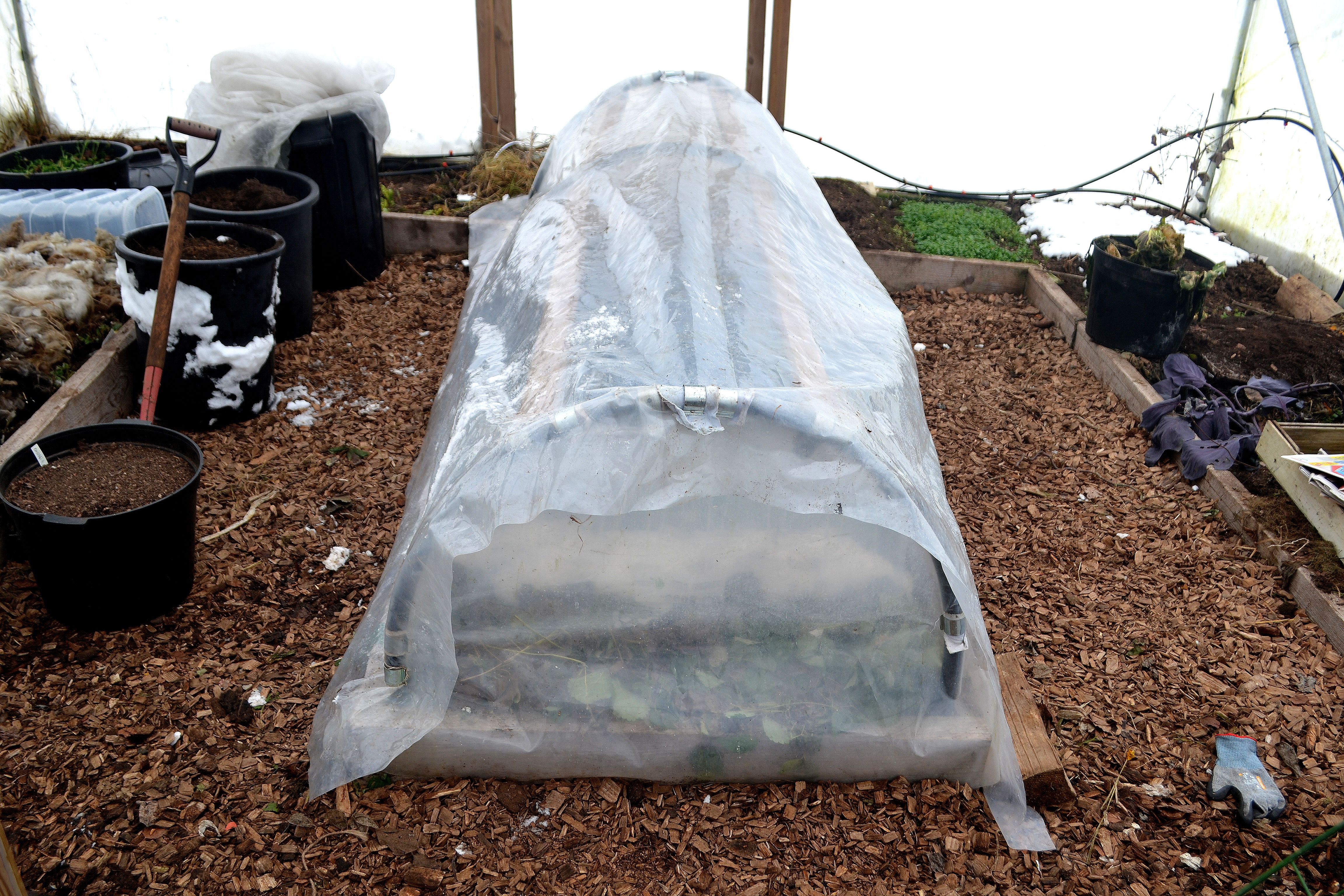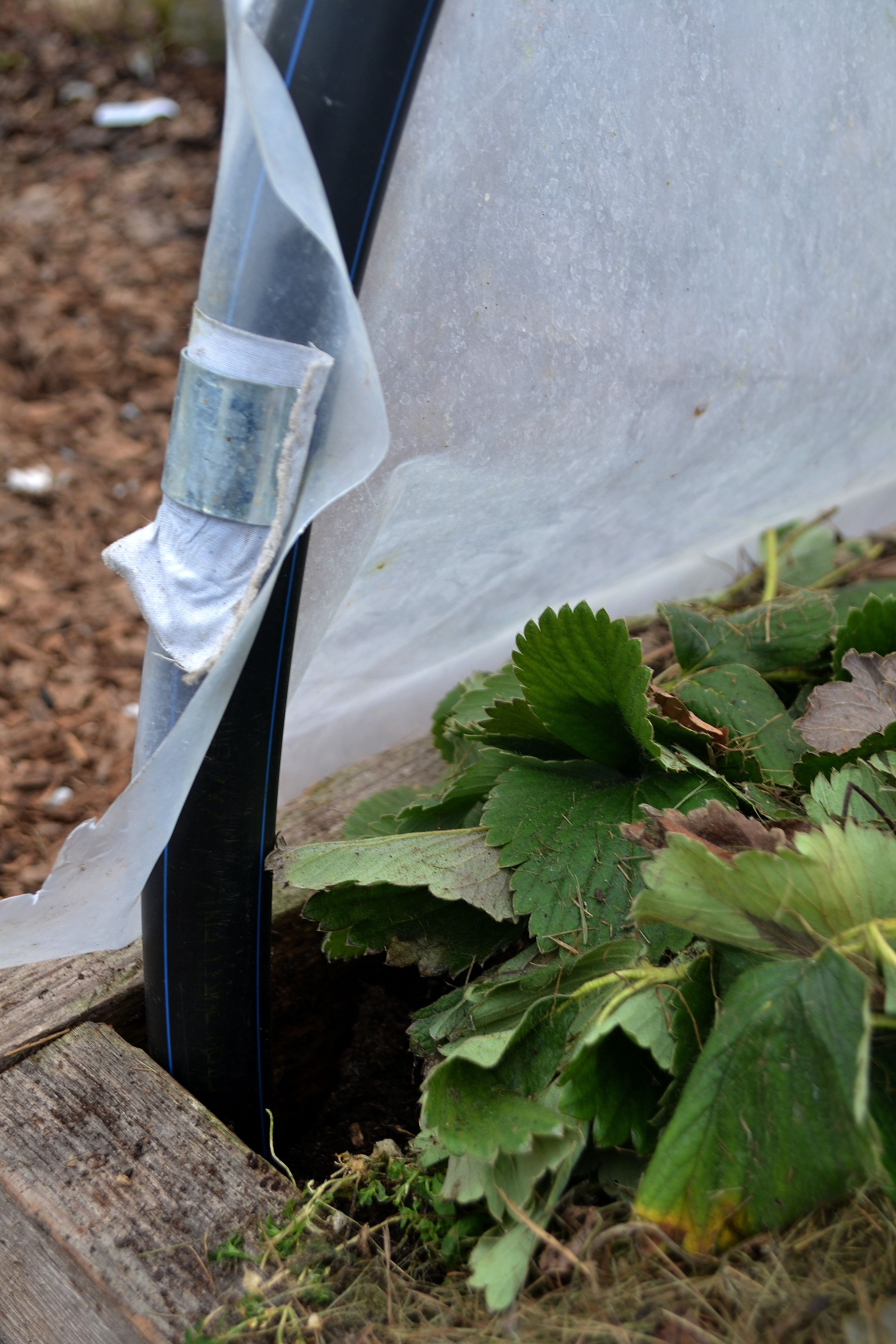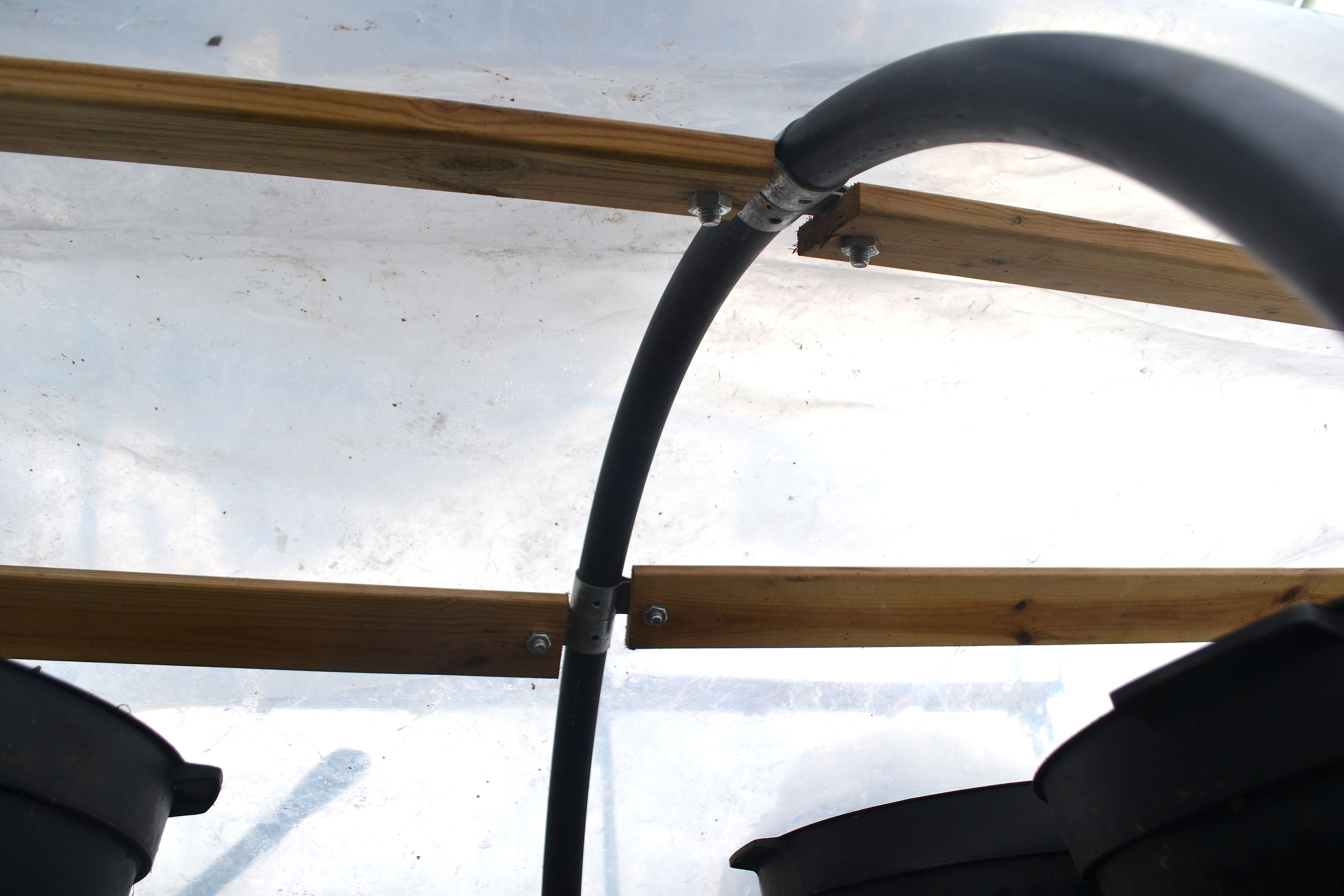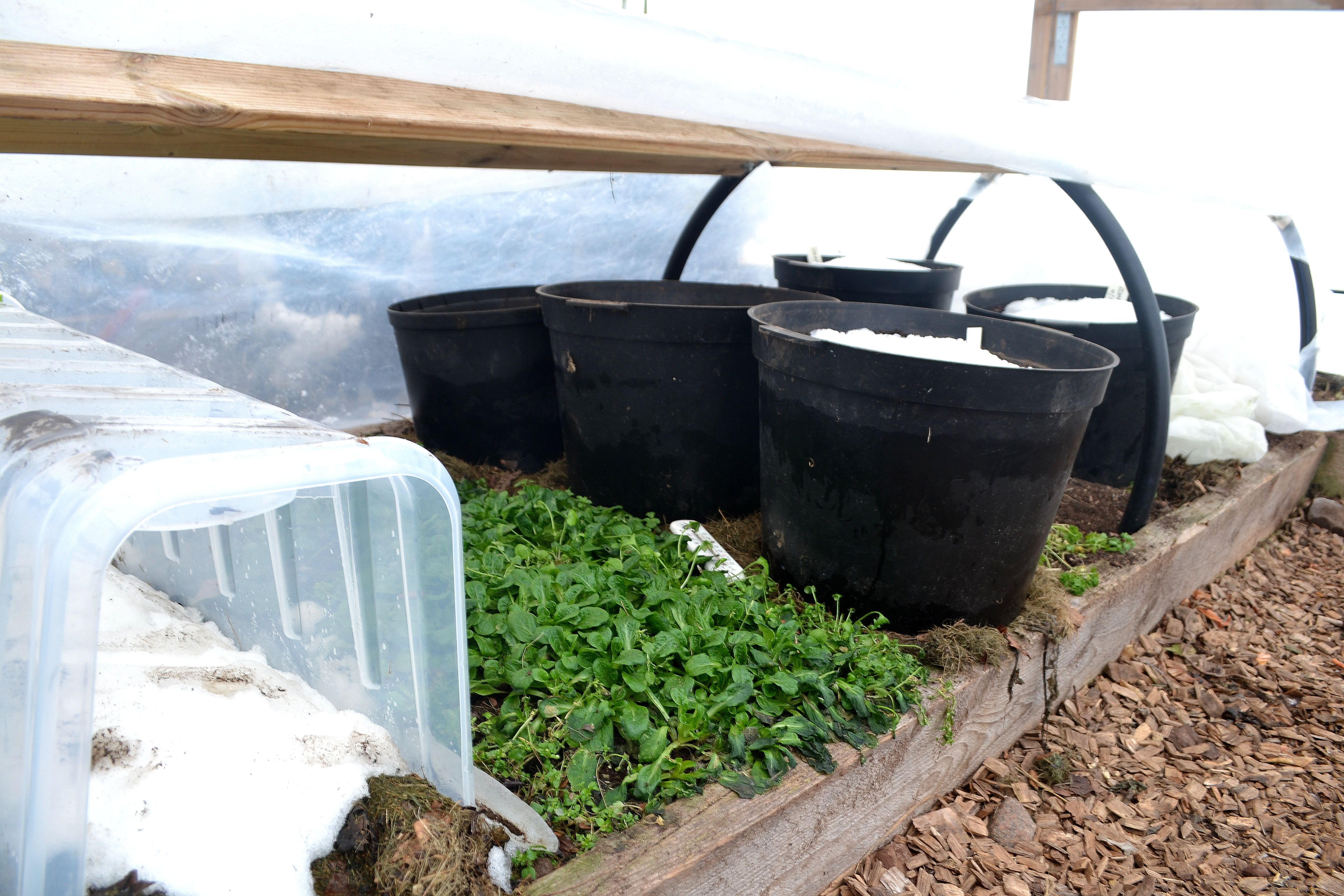Garden DIY: Building a polytunnel
Spinach, lettuce, lamb's lettuce and more grows here inside my miniature polytunnel that I put in my greenhouse. Read this article to learn how you can start building a polytunnel at home too.

The little tunnel covers the middle bed in a section of my polytunnel. I will need to take the tunnel down in summer to be able to fit the taller plants.
This project has been on my to-do list for a while now, but I just haven't had the time. I finally had a few hours to myself in the garden this weekend and decided to finally get going. I dismantled my little polytunnel in the large greenhouse and put it up in a different spot. Building a polytunnel (a small version) is actually really easy. This is how I do it.
Improving the climate
Keeping a small polytunnel inside the large greenhouse is a great way to improve the climate for the plants in winter. It makes sense since several protective layers will help the plants when it's cold. Every layer is said to improve the climate by 37-39 degrees (3-4 degrees Celsius) which is an entire hardiness zone (there are 8 different zones in Sweden.) So, the large polytunnel is the first line of protection, then there's the small polytunnel and if I need some extra help I can just put some fabric on the soil as a final line of defense. These simple measures helps me protect the soil from freezing basically all winter.
Until now, I kept the small polytunnel along the left side of my polytunnel. But since I decided to create a hot bed there this year, I needed to move it. The hoops needed to get shorter so I simply cut them off to the length I want.
Read more about polytunnels on the blog: Sara's Kitchen garden – polytunnels

I put the bows on the inside of the rim. The soil is very nice and loose here so it's really easy to push the pipe into the soil.

The plastic is fastened with the help of some thin boards I attached to the bows.
Pipes and greenhouse plastic
Building a polytunnel is surprisingly easy! This polytunnel was built from PEM plastic piping and greenhouse plastic. These kinds of pipes are often used for cold water systems above and below ground. You can find them in your regular hardware store.
I shortened the pipes so that the tunnel wouldn't be too tall. My goal was to grow low-growing vegetables in winter and spring, so I don't need it to be very large.
I dug 8-12 inch (20-30 centimeter) deep holes in the corners and along one of the long sides of the middle bed and pushed the pipes into the holes. There are brackets that you can use to fasten the pipes to your frame. But since I hadn't decided how I wanted to use the polytunnel yet, I decided on this simple solution. I connect the pipes on top with the help of a thin board and some fittings. This will help stabilize the whole construction.
I fastened the greenhouse plastic with the help of u-shaped brackets over the bows, with a small piece of fabric underneath to protect the plastic. After that, I cut the plastic so it fits the bows. Then the last step is to add a larger piece of plastic on top of the entire tunnel and fasten it with the same type of brackets. I leave one side open though so I can get in and work in the tunnel.

This space is perfect for my plants. When I close the tunnel, I get a really nice and warm climate in there. I can't wait to see the results!

There's room for plenty of stuff in here in the polytunnel. I brought a few pots in here to grow vegetables in. My winter sown sugar snap peas are resting under the snow in the left part of the picture.
Early vegetables
I have great soil in the middle bed, which I fertilized with bokashi compost and mulch. I have lamb's lettuce, purslane and Chinese chives in this bed. I also decided to sow spinach, lettuce and sugar snap peas, and some of these have already started to grow. There are also large pots of spinach, dill and some other vegetables in here.
February is the time when the sun comes back here in Sweden, and it helps heat my polytunnel. It can get up to 70 degrees (20 degrees Celsius) in there even though there's a thick layer of snow covering the kitchen garden outside. As soon as the tunnel gets a little hotter, the heat stays in the miniature polytunnel too and this helps the vegetables in there get a good head start.
The picture below was taken in April 2017 and it shows a spot I managed to protect really well in order to grow early vegetables. No extra light or heat needed, my vegetables grow nicely here anyway. Building a polytunnel inside the larger structure really works!
Read more about growing vegetables in winter: Winter sowing

This is what a well-protected bed looks like in winter! I overwintered plenty of lettuce plants here that I can start harvesting in March. The picture was taken in April 2017.
So, if you have a greenhouse that you want to use to grow early vegetables in, you might want to try building a polytunnel in there. You can use a pallet collar bed with a lid on top, a see-through plastic crate turned upside-down, or a miniature polytunnel like the one I'm using. Try building a polytunnel too!
/Sara Bäckmo



Leave a Reply
You must be logged in to post a comment.